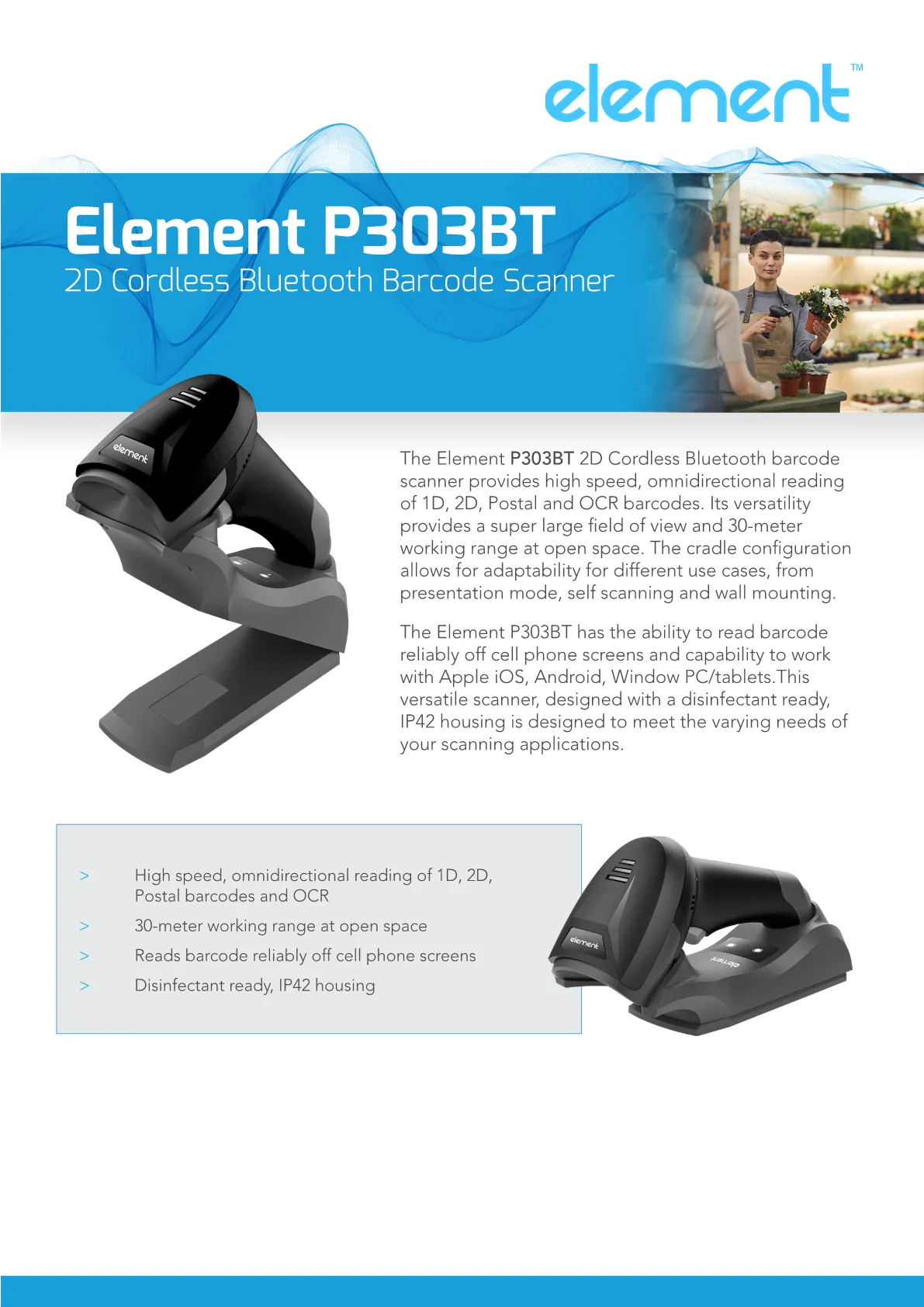Unveiling the Key Element in Barcode Scanners: Exploring the Role of Lasers
Introduction
When you check out your groceries or purchase an item at your favorite clothing store, the process is quick and straightforward, thanks to barcode scanners. These devices that speed up our daily transactions employ complex technology, with lasers at its core. Join us as we uncover the vital role lasers play in barcode scanners and how they impact our everyday lives.
What Are Barcode Scanners?
Often overlooked, barcode scanners - sometimes referred to as barcode readers - are critical components of many industries, playing a crucial role in our daily lives. These handy digital tools serve one primary function: to interpret the data encrypted in barcodes. But, how familiar are you with their workings?

Essentially, barcode scanners are electronic devices designed to read the information stored in a barcode. This is done by translating the barcode image into a form of alphanumeric data that computer systems can understand. These unique data points can vary from prices and inventory details to identification numbers, and much more.
Retail, logistics, manufacturing, and healthcare are just a few sectors where you'll frequently encounter these indispensable tools. They allow for fast, efficient data processing, offering accuracy and speed that optimizes operations and enhances productivity. They're a silent ally, ensuring that our transactions remain swift and stress-free.
How Do Barcode Scanners Work?
Understanding how a barcode scanner functions can be intriguing. The process uses various components - each playing a crucial role to deliver the required data. To better comprehend the method, let's break down the four main steps:
1. Beam Generation: The process begins with the generation of a laser beam - the core of barcode scanning technology. This light source is the essential element that drives the entire scanning mechanism.
2. Beam Direction: The laser beam, once generated, must hit the barcode to begin the scanning process. A system of mirrors helps to direct the laser towards the barcode.
3. Light Reflection and Absorption: The barcode comprises black bars and white spaces. The black bars absorb the laser light, while the white spaces reflect it back. This contrast of absorption and reflection forms the differing light patterns which encode the data in the barcode.
4. Capture and Decoding: The reflected light patterns, or the scan line, is then captured by a light sensor within the scanner. The device decodes this scan line, translating the data into a format which the connected computer system can process.
To sum it up, barcode scanners use a beautiful blend of optics and electronics to deliver quick and accurate data from the barcodes. This blend begins with the laser - its focused, steady beam of light designed to unveil the essential information encoded into every stripe of the barcode.
What's the Essential Element in Barcode Scanners and Why Is It Used?
The Science Behind Laser Barcode Scanners
Barcode scanners, streamlining transactions worldwide, owe their efficiency to laser technology. "Laser" stands for Light Amplification by Stimulated Emission of Radiation, a complex term that refers to how laser beams generate an intense and precise light source. These beams are just what barcode scanners need to quickly and accurately scan barcodes.
Understanding How Lasers Operate in Barcode Scanners
In a laser barcode scanner, the entire process revolves around the laser beam:
- The process begins when the laser diode generates a laser beam.

- The incoming beam is angled towards the barcode using mirrors.
- When the laser beam hits the barcode, the black bars absorb the light while the white spaces reflect it back.
- This reflected light is captured by the scanner's sensor, a critical step that sets the decoding process in motion.
The benefits of lasers in barcode scanners are evident:
- Precision: The laser's sharp focus allows it to scan barcodes with excellent accuracy.
- Consistency: The steady intensity of the beam guarantees consistent results.
- Speed: Lasers can scan faster than many other light sources.
- Versatility: Lasers adapt easily to varying scanning distances and angles.
However, the relationship between barcode scanners and laser lights is not just about strengths. Every Ying has its Yang, and in this context, the limitations of lasers come to light. For example, some safety risks come with laser technology, and laser scanners generally have a higher price tag than other types. Also, laser scanners can only work with linear, one-dimensional barcodes. Despite these drawbacks, laser technology continues to be the preferred choice in barcode scanning, offering unparalleled speed and accuracy to the mix.
What are the Advantages and Disadvantages of Using Laser in Barcode Scanners?
In this section, we dissect the operational benefits and shortcomings that come with utilising laser technology in barcode scanners. Understanding these factors will provide valuable insights for businesses considering their options.
Pros of Using Laser in Barcode Scanners
1. Superior Accuracy: Laser barcode scanners are well-known for their optimal accuracy in scanning. With a tightly focused beam of light, lasers can pinpoint and read even the most intricate barcodes.
2. Excellent Speed: Speed is a crucial factor in fast-paced industries, and lasers are unbeatable in this aspect. They are capable of scanning a high volume of data in the blink of an eye, thereby improving operational efficiency.
3. Greater Scanning Distance: Laser barcode scanners can accurately scan barcodes from a considerable distance. This feature is very beneficial when dealing with large, bulky items that cannot be moved easily.
4. Overall Robustness: Laser scanners are adept at scanning low-quality or damaged barcodes. This resilience is crucial in high-traffic, bustling environments like supermarkets or warehouses.
Cons of Using Laser in Barcode Scanners
1. Limited Flexibility: While highly effective in scanning linear, one-dimensional barcodes, laser scanners do struggle with two-dimensional barcodes. This could limit their applicability in scenarios requiring more versatile scanning options.
2. Potential Safety Hazards: The intensity of lasers' light beams, if misused, can potentially harm human eyes. Proper safety measures need to be adhered to when using laser barcode scanners.
3. Higher Costs: Because of their advanced technology, laser scanners generally command a higher price point as compared to their LED counterparts. This factor might pose a barrier to small businesses or those operating on a tight budget.
Thus, while the laser barcode scanner holds promise in terms of speed, accuracy, and range, one must also factor in its limitations and potential costs while considering its adoption. The ideal choice boils down to the specific requirements and resources of the business in question.
What Does the Future Hold for Laser Barcode Scanners?
As we glimpse into the potential developments of laser barcode scanners, it's clear that the focus largely lies in optimizing the balance between accuracy, speed, safety, and affordability. Leveraging advanced technologies such as Artificial Intelligence (AI) could play a transformative role in automating and improving the inherent drawbacks of the current laser scanning technology.
Increasing scanning speeds and distance allowances are priority upgrades to ensure even faster checkout times in retail environments. Also, there's a growing need for laser scanners that can handle complex, multidimensional barcodes, pushing the shift from 1D to 2D barcode scanning.
Furthermore, niche markets such as medical and industrial applications are exploring safer, infrared lasers, thus reducing the risk of harming eyesight. Lastly, the cost factor can't be overlooked. Strategies for economical production of laser scanners are underway to make this technology more accessible to smaller establishments and industries.
The future of laser barcode scanners will likely embody a blend of refined elements, taking this seemingly simple technology to new heights of efficiency and reliability.
Conclusion
Laser barcode scanners offer numerous benefits. Chiefly, they deliver superior reading accuracy, high scanning speeds, and a broad scanning range. They can decode even damaged or poorly printed barcodes, providing a degree of robustness that's essential in bustling retail environments.
However, as with any technology, lasers in barcode scanners aren't without limitations. Firstly, they can only read linear, one-dimensional barcodes. Secondly, they can pose potential eye safety hazards if misused. Lastly, scanners using laser technology are comparatively more expensive than their LED counterparts.
Related FAQs about what element is used in barcode scanners
Why are lasers considered a critical element in barcode scanners?
Lasers in barcode scanners are the primary source of light that enables the scanning of data in barcodes. The laser emits a beam that is directed to the barcode. The white spaces reflect the laser light, while black bars absorb it, creating a contrasting light pattern that represents encoded data.
How does a laser benefit the barcode scanning process?
Lasers offer exceptional accuracy and reliability to barcode scanning. Their intense light and focused beam enable them to accurately read even intricate barcodes swiftly. In addition, lasers can reliably scan from a considerable distance, making them versatile tools catering to varying barcode scanning needs.
Are there any viable alternatives to lasers in barcode scanners?
Yes, LED (Light Emitting Diode) scanners are an alternative to lasers. They emit light outward in all directions, relying on a lens to focus the light into a readable pattern. While they're generally cheaper, they offer less precision and range than laser scanners.


